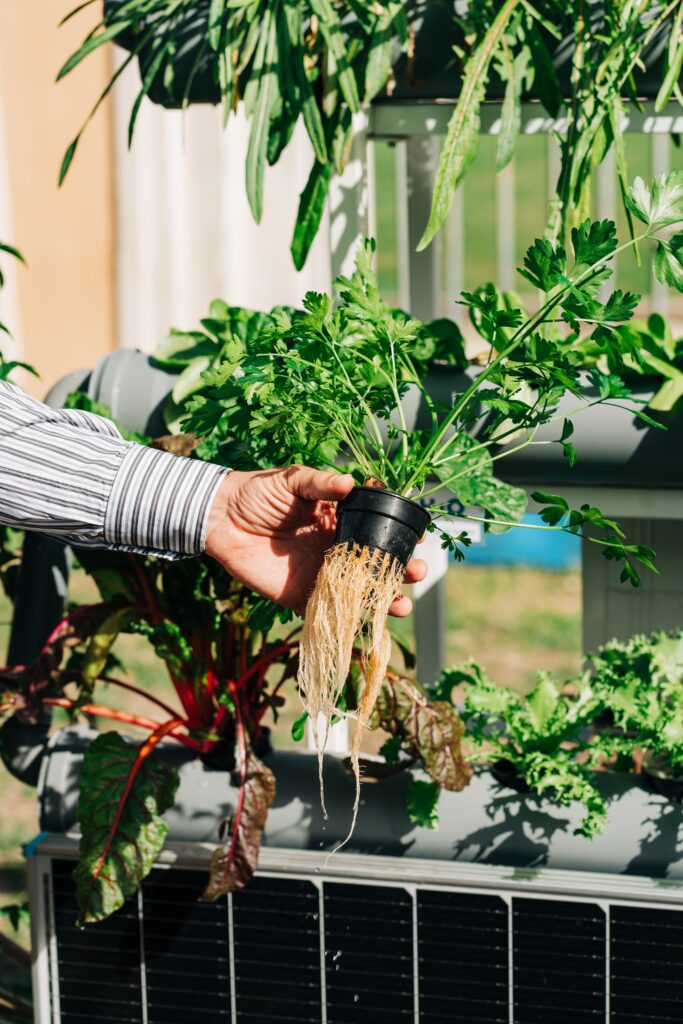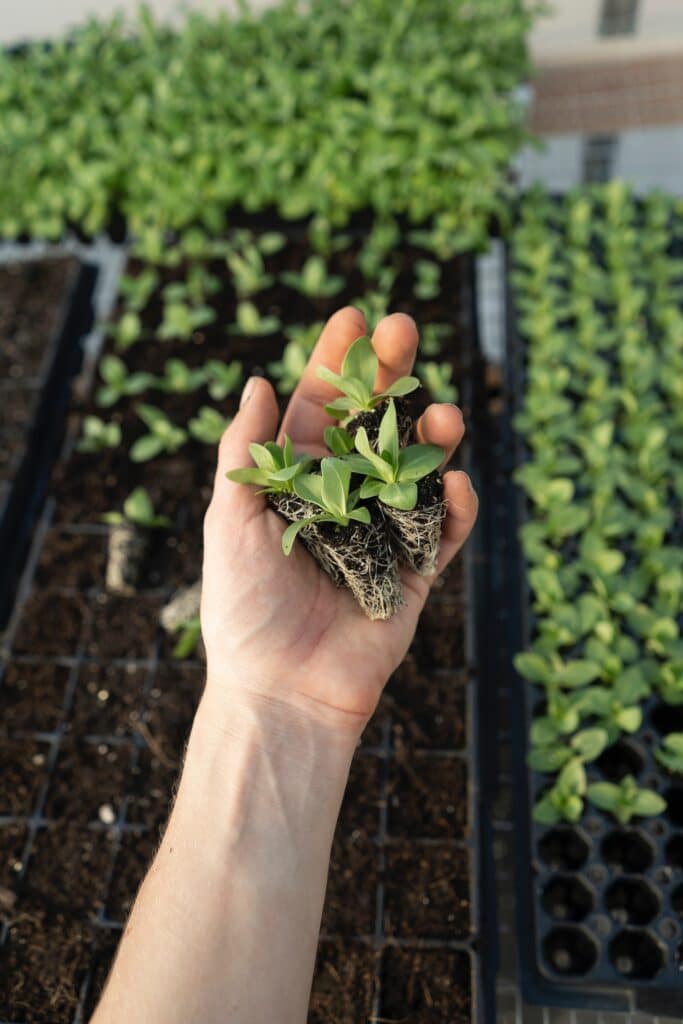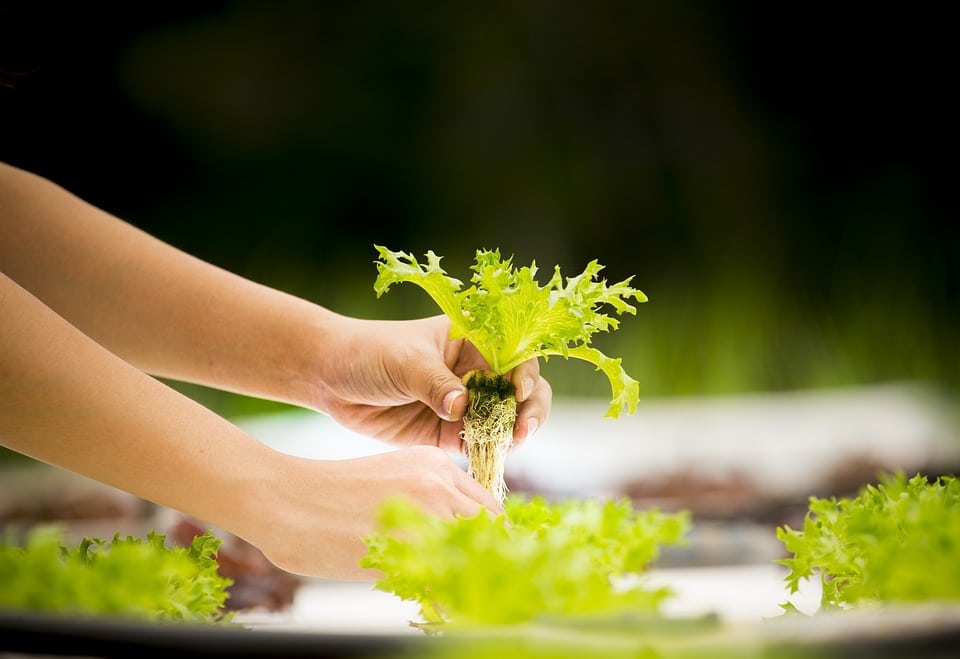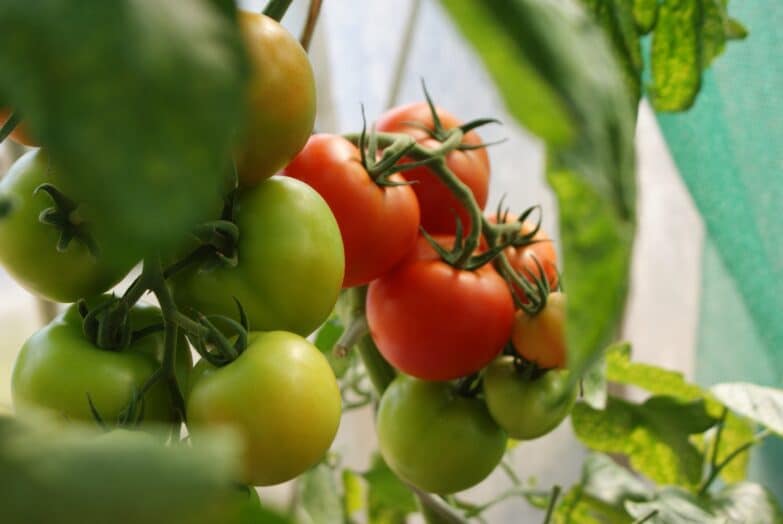Are your green fingers itching to grow some hydroponic seeds? In that case, you’ve arrived at the right place! While it can be tough to know which hydroponic plants grow best from seed, this blog post is designed to enlighten and inspire you to make your pick from a selection of the most suitable seeds. The following herbs and vegetable seeds make for easy growing – as they don’t require too much special attention. Ideal for beginners, our hydroponic seed selection consists of…
1. Tomatoes
As a favorite hydroponic vegetable to grow the world over, hydroponic tomatoes are not only easy to maintain, but with so many varieties to choose from, tomatoes make for great hydroponic friends indeed. Requiring great amounts of water, tomatoes are heeded as the king of hydroponic vegetables for some good reasons. Once they get growing, there’s almost no stopping them. By following the simple germination tips outlined in this very article, you’ll soon be the proud harvester of ripe red juicy tomatoes!
2. Parsley
Out of all the herbs on this green earth, parsley is perhaps one of the easiest specimens to grow hydroponically. Parsley is an amazing herb that is easy to grow, with a fast growing rate of 40-50% and able to produce 30% more yield! What’s not to like about hydroponic parsley? We really can’t say. And hey, you can always switch things up and repot them into a pot indoors. Or why not have both and grow all the parsley your heart desires?
3. Lettuce
Lettuce is becoming one of the favorites for hydroponic newbies and is one of the most common plants grown amongst hydroponic growers. The reason for this being is that it can be grown in temperate and tropical climates. It is good for you and both the stems and leaves can be eaten. Lettuce can easily be grown with hydroponics
4. Mint
Mint can be grown in multiple varieties in any hydroponic system. Growing mint in a hydroponic system is one of the simplest and best ways to add fresh herbs to your kitchen. Since mint plants need to be periodically thinned, this thinning process is the perfect time to get new cuttings to start hydroponic mint. But if you’re just getting your mint going from seeds, mint can be started from seed in a hydroponic system by following the general steps outlined in this article.
5. Peppers
Hydroponic peppers might take some extra care – but even if you’re a beginner – it’s totally possible! With the right products & resources, you can easily cultivate delicious, fresh, homegrown peppers in your home. From hot peppers to sweet peppers, banana peppers to bell peppers, these diverse and tasty vegetables can be quite easily grown in a hydro environment.
6. Asparagus
Growing asparagus hydroponically is a great way to have your go at water-based growing. You can grow this highly nutritious vegetable both outdoors and indoors with the help of hydroponics. Asparagus is a favorite vegetable in many homes and restaurants. Asparagus farmer started turning to hydroponic greenhouse growing practices, which can provide higher yields at a faster rate. Hydroponic asparagus is grown in water instead of soil, and it has a longer shelf life than traditional asparagus. It also has a higher yield than traditional farming, making it a more efficient way to grow this popular vegetable at home for your family and lucky friends.
7. Carrots
Why not try growing your food? Imagine how satisfying it would be to say that you grew your own carrots! And not only have you grown them yourself, but you know exactly what went into them. Carrots are an essential ingredient to any worthy kitchen, and growing them hydroponically is a great way to stay out of the supermakret. You can create a thriving hydroponic carrot crop that free of pests and diseases. As carrots are relatively easy to grow and don’t take up too much space, hydropnoic systems just love them!
8. Basil
asil thrives very well in a hydroponic system, and it is indeed among the most grown herbs in Hydroponic. You can grow basil in NFT or Drip system. Once this plant reaches the mature stage, you harvest and trim it weekly. Basil needs lots of lights. It will undergo a poor growth when you do not provide it with over 11 hours of lightning.
9. Kale
Kale is a very nutritious and delicious-flavored plant for home and restaurant dishes. It is a great vegetable for a healthy person with proven health benefits. The great news is that people have grown Kale hydroponically for so many years, so definitely you can do it in the water system. And in fact, it’s easy to grow and thrive well in this system.
10. Strawberries
Yes, we know that strawberry is a fruit, however, we just had to put it on this list. Why? Well, because strawberries are well suited for hydroponic growing. In fact, these fruits are one the most popular plants grown in commercial hydroponic production. You can still enjoy delicious fresh strawberries to feed all your family by growing them at home and harvesting the fruits all year long.
What Will You Need to Get Growing?
To get started with your seeds, you won’t need much. Generally, you can setup a whole hydroponic system for around $80 including a store-bought cloner. (If you’re interested in cloning later) With that said, you will need the following items to successfully grow the species listed in this article:
- Hydroponic Cloner / Reservoir
- A few 2″ Net Pots
- Starter Plugs or germination medium
- Seeds!
- Air Pump
- Air Stone
- Tubing
- Proper, quality growing medium

Germinating Your Seeds Hydroponically
Before germinating seeds, you want to soak each of your starter plugs in some water before placing it in a net pot. The moisture will help the seeds germinate. Then you can go ahead and drop 2-3 seeds in each starter plug. Because not all seeds will germinate, be sure to spread more than 1 seed to increase your chances for successful germination.
For hydroponic seedlings to germinate, three basic elements are needed beyond the starter plugs, namely moisture, bright light, and warmth. Where ample moisture is needed in order for the hydroponic seedlings to sprout, bright light and warmth of around 70 degrees works the real magic and brings your seed to life.
Using a growth medium made specifically for seed germination is the easiest way to germinate hydroponic seedlings. Rockwool cubes, for instance, are very popular with hydroponic growers. You can also use peat moss for this purpose.

How to Start Your System
Fill The Cloner With Water
Fairly simple step here. All you need to do is fill up your reservoir to just under where your net pots sit. Don’t worry about pHing your water or using reverse osmosis right now – standard tap water will be fine.
Setting Up the Air Pump
To setup your air pump, you’ll need to place the air stone in the reservoir and connect the tubing. Be sure to connect the other side to the air pump and then plug it in. You should see some bubbles start to come out of the air stone. These bubbles are essential in a hydroponic system for the ongoing growth of the root system.
Maintaining Your Seedlings
This system is very easy to maintain as your seeds sprout. If you want, you can place a transparent cover over the top to keep in some moisture and increase the temperature of the system, but it’s not necessary. Make sure to moisten the starter plugs with a few sprays from a spray bottle every day so your seeds have enough moisture to sprout.
When your seeds sprout, clip off all but the strongest seedling from each starter plug. That’s it! Your seeds should sprout in 3-5 days for most plants and you’ll be ready to start growing some beautifully lush edible plants in your hydroponic system in no time!
A reminder of the Benefits of Starting From Seed
- The greatest upside starting your seeds hydropincally, is the fact that you the one in complete control. This means you are at liberty to grow pest-free, amazing edible plants.
- You have more choice. There are thousands of varieties of seeds, compared to the relatively limited selection at the nursery.
- Plants that are carefully tended — watered properly, fertilized, etc. — adapt more quickly when moved to the hydroponic system compared to plants that have been stressed.
- If you start your plants using hydroponic techniques, you won’t need to worry about rinsing soil from roots (risking damage to roots) or soil-borne diseases.
- You’ll save money. Most seed packets contain dozens, if not hundreds, of seeds, for the price of a six-pack of seedlings.
- There are few things in life more rewarding than planting a seed and then watching as it sprouts and grows!
Beginner Hydroponic Seeds: In Conclusion
Having a go at planting and growing seeds hydroponically is an excellent way for beginners to start growing their own food and save money simultaneously. Now that you know all the necessary steps to starting your hydroponic garden, it’s time to get growing and have some fun!


